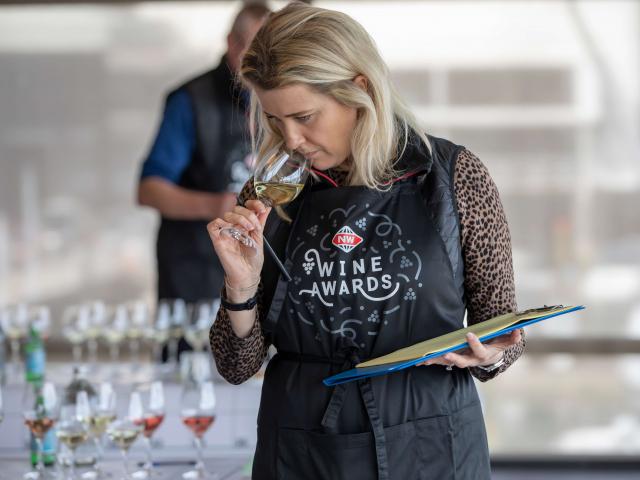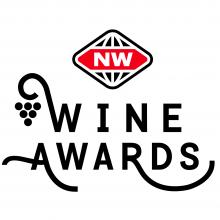
Chair of Judges for the 2020 New World Wine Awards, Jim Harré, offers some recommendations from this year’s superb Top 50 list.
The New World Wine Awards presents a superb Top 50 list for consumers to explore each year. To make the list, a wine must be a top-scoring Gold medal winner; a perfect example of its style. With so many great wines to choose from however, it can be a challenge to know where to begin.
Jim Harré, Chair of Judges for the Awards for the past 13 years of its 18-year history, is uniquely placed to make some recommendations. Over the almost two decades of the Awards, New Zealand wine has continued to evolve and mature. In 2020, the industry is at a particularly exciting juncture, Harré believes.
“There’s enough maturity in our industry to understand now how to make great wine – we’re doing this consistently and at a top level,” he says.
One leap of faith for winemakers is the introduction of styles outside the well-established paradigm that is dominated by Sauvignon Blanc, with Pinot Noir, Pinot Gris, and Chardonnay following up.
Other varietals, including Riesling, Merlot, Syrah, Cabernet Sauvignon, and Gewürztraminer also have a niche. But it can be difficult to encourage consumers to explore wines outside of what they already know. The New World Wine Awards Top 50 offers a great opportunity for people to do just that, with the confidence that they are all excellent Gold medal-winning wines.
Harré highlights The Hunting Lodge Seasonal Collection Albariño 2020 as a perfect example. The aromatic style may not be widely known in New Zealand, but it pairs superbly with seafood.
“These are really smart wines,” Harré says. “They have that tell-tale little touch of salinity right on the finish of the palette that’s so important. For me Albariño has a lot of things going for it – it’s pronouncable, it’s really nice to drink, and it’s fantastic with seafood – a perfect match for warmer weather. It’s also different enough that people will be interested in it.”
Another in the less recognised bracket is Viognier, although it has been grown in New Zealand for some years. The Crater Rim Waipara Viognier 2019 is a spectacular example of this style.
Unsurprisingly, in a category that many consumers already appreciate – bubbles – there are a host of impressive winners in this year’s Top 50. But some may be surprised that the Champion Bubbles for 2020 is the Lindauer Vintage Series Brut Cuvée 2017. Even Harré admits to being pleasantly surprised by this entry.
“I didn’t realise they produced a vintage until after the competition,” he says. “I was really impressed, and thought it was an amazingly good wine. Most vintage sparkling wines age really well too, so it’s my intention to put a case aside and see what it is like in a couple of years' time.
A laudable aspect of the New Zealand wine industry is its ongoing commitment to sustainable production. In the New Zealand Winegrowers Annual Report 2020, British wine writer Jane MacQuitty is quoted as saying, “if I had to pick one wine country that is greener than others, it would be New Zealand”.


Harré suggests that New Zealand growers have pushed sustainability to about 98%, which is an amazing achievement by any measure. Due to this he believes that the industry should be better at telling the provenance story behind the wine.
“New Zealand has been slow to catch onto that concept, of telling the story of where the product has come from and why that’s special,” he says. “It’s a fascinating story that in my mind we should have been telling for a long time. They’re just really good products, and that’s what we should be standing on hilltops shouting out to everyone.”
The internationally-experienced wine judge has been witness to seismic shifts in New Zealand-made wine. Having grown up in West Auckland, he remembers the notorious Montana Cold Duck – as an “inane” sparkling wine.
Since those dark days, he’s seen this country step back from using French regional names like Champagne, Bordeaux, and Burgundy, that it had no rightful agency over.
More importantly, the intervening years have seen the monumental rise of the locally produced wines that now dominate both the domestic and export markets – predominantly Sauvignon Blanc.
Harré notes it was only in the 1970s that New Zealand’s winemakers began the first risky but calculated moves to plant Sauvignon Blanc in Marlborough. Fast forward and it is now the country’s most produced and exported wine. There are eight Sauvignon Blanc in the Top 50 this year, seven from the much-loved Marlborough region, and the Waiata Waipara Sauvignon Blanc 2020, offering something a little bit different from just north of Christchurch.
Since then, other varietals – like Pinot Gris and Syrah – have required similar emotional and financial investments that have eventually paid off for the visionary winemakers willing to take a punt. This year, the Top 50 features five delicious Pinot Gris – now New Zealand’s third most produced wine, and two Syrah from Hawkes Bay – wines that are beginning to attract serious local and international praise.

Check out the full list of New World Wine Awards winners at newworld.co.nz/wineawards and find the Top 50 wines at your local New World store.












